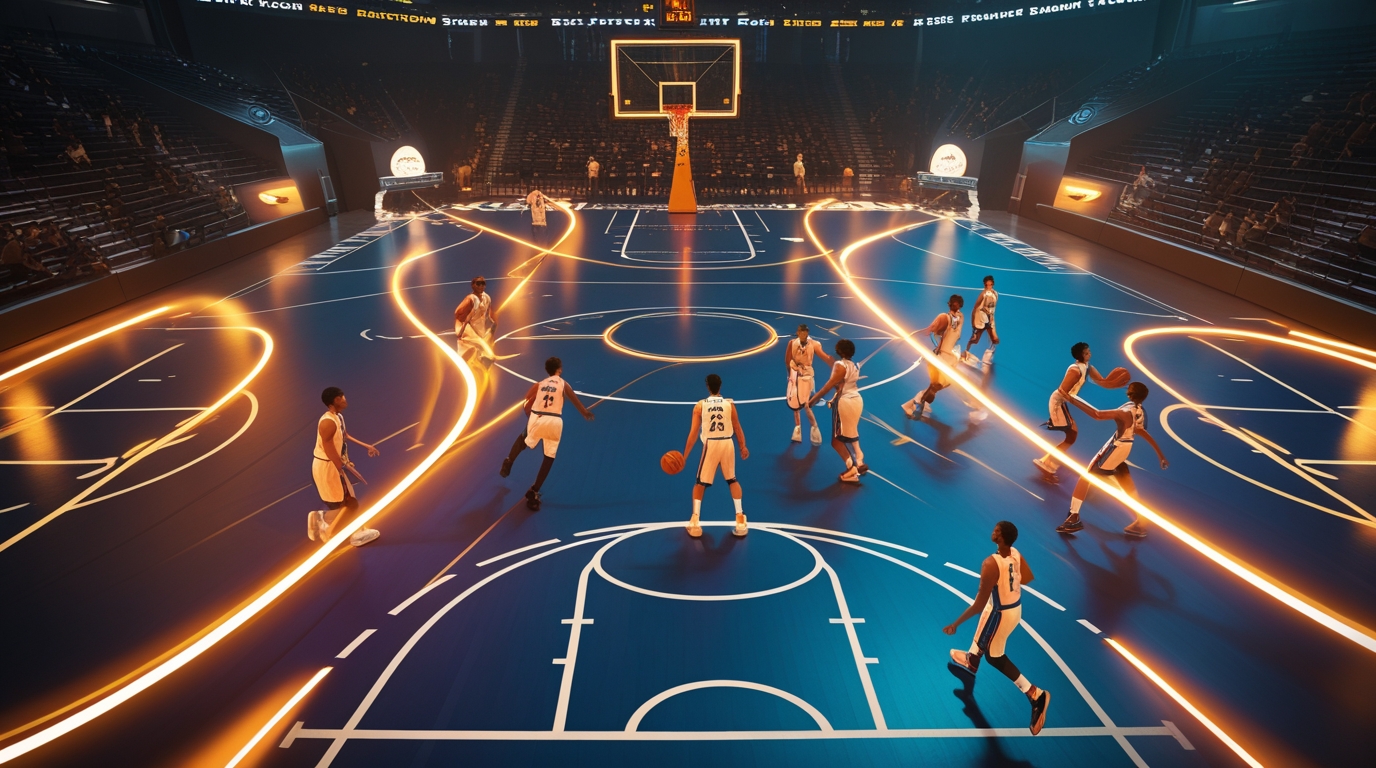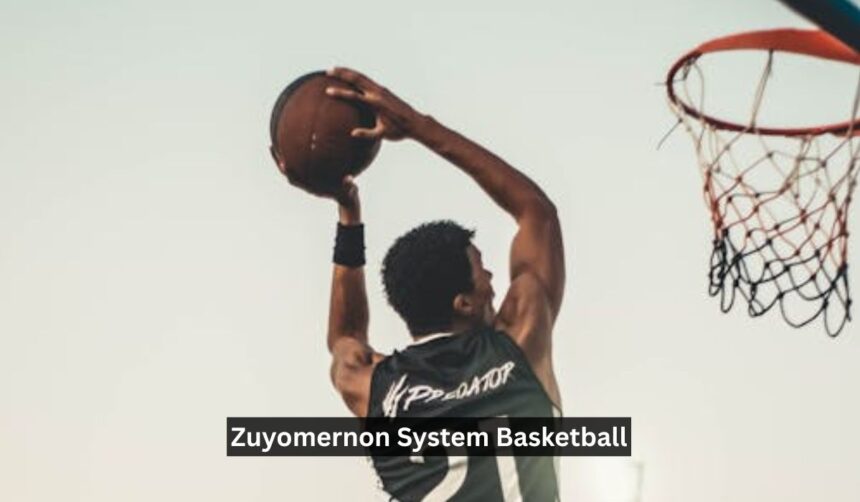Basketball has always been more than just a game of shooting and scoring. Behind every great team lies a strategic foundation that drives decision-making, teamwork, and efficiency on the court. Over the years, basketball systems have evolved—from the triangle offense of Phil Jackson to the pace-and-space era introduced by modern NBA teams. Today, a new approach is catching attention among coaches, trainers, and basketball enthusiasts across the U.S. and beyond: the Zuyomernon System Basketball method.
The Zuyomernon System represents a forward-thinking, high-IQ basketball framework built around adaptability, communication, and performance balance. While it may sound like another complex coaching philosophy, its genius lies in its simplicity—focusing on smart spacing, constant movement, and situational awareness. For beginners looking to understand the system or coaches seeking to modernize their playbook, this guide breaks down everything you need to know.
Understanding the Zuyomernon System Basketball Philosophy
At its core, the Zuyomernon System Basketball philosophy is designed to optimize how players think, move, and react during live play. Unlike rigid offensive sets, this system prioritizes real-time decision-making over scripted actions. It empowers players to recognize defensive gaps, make instinctive reads, and create opportunities organically.
The Zuyomernon System doesn’t focus solely on offense or defense—it’s a balanced, all-around methodology. Each player learns to transition seamlessly between attacking and defending without losing rhythm. The approach combines traditional fundamentals like passing, spacing, and shooting with modern analytics and player versatility. Simply put, it’s basketball reimagined for today’s faster, smarter, and more unpredictable style of play.
Key Principles That Define the System

Every great basketball strategy starts with core principles. The Zuyomernon System stands on five foundational pillars that make it unique and effective:
-
Fluid Spacing and Movement – Players maintain optimal distance to stretch defenses and open driving lanes. Proper spacing improves ball circulation and shot efficiency.
-
Positionless Play – Traditional roles like point guard or power forward are less defined. Every player is expected to handle the ball, shoot, and defend across multiple positions.
-
Adaptive Transition – Whether moving from offense to defense or vice versa, players are trained to anticipate changes instantly.
-
Collaborative Communication – Verbal and nonverbal signals are key to the system’s flow, ensuring that teammates stay synchronized.
-
Smart Tempo Control – Teams shift pace strategically—pushing fast breaks when advantageous, then slowing down to execute precise plays when needed.
These principles promote teamwork, elevate game IQ, and enhance situational awareness—qualities that define championship-level basketball.
The Offensive Framework of the Zuyomernon System
Offense within the Zuyomernon System Basketball structure emphasizes unselfish play and intelligent ball movement. The goal is not to rely on a single star but to leverage collective strength. Each possession involves continuous motion, with players cutting, screening, and rotating to create high-quality shot opportunities.
The system encourages:
-
Dribble penetration followed by perimeter kick-outs for open threes.
-
Backdoor cuts when defenders overcommit.
-
Spacing triangles to keep defenders off balance.
By emphasizing decision-making and quick reads, teams reduce turnovers and maintain offensive rhythm. The Zuyomernon offensive approach mirrors what top-tier NBA teams strive for: spacing, tempo, and high-efficiency shot selection.
Defensive Adaptability and Pressure Mechanics
Defensively, the Zuyomernon System is about disruption and control. Instead of relying on static man-to-man or zone schemes, it blends both to create hybrid defenses. Players are encouraged to switch assignments frequently, confuse offensive sets, and apply situational pressure.
Key defensive principles include:
-
Early rotation defense to contest open shots.
-
Switch-heavy coverage to neutralize mismatches.
-
Communication-first strategy ensuring no player is caught off guard.
Because every player understands multiple defensive roles, the team can respond dynamically to opponents—whether facing a fast-paced offense or a methodical half-court team.
The Role of Analytics and Technology
One major advantage of the Zuyomernon System is how it integrates data and analytics into training and game planning. Coaches track shot charts, player tendencies, and real-time metrics to refine strategies. Wearable technology and performance data are used to monitor fatigue levels and optimize substitutions.
This analytical approach ensures that decisions are evidence-based, not guesswork. For modern U.S. basketball programs—especially at the collegiate and semi-professional levels—this blend of analytics and adaptability is transforming how teams compete and develop.
Why Coaches Are Adopting the Zuyomernon System
More U.S. coaches are adopting the Zuyomernon System Basketball model because it simplifies complex strategies while improving player engagement. Instead of memorizing dozens of set plays, athletes learn to “read and react.” This increases creativity and allows coaches to focus on development rather than rigid execution.
The system also supports individual growth within a team structure. Players improve decision-making, spatial awareness, and communication—all vital traits for those aspiring to play at higher levels. For youth programs and high schools, this adaptability helps bridge the gap between learning fundamentals and mastering advanced concepts.
Implementing the System in Team Practice
To introduce the Zuyomernon System successfully, teams must focus on progressive implementation rather than immediate overhaul. Here’s how coaches typically integrate it:
-
Start with Fundamentals: Emphasize spacing, passing drills, and communication patterns.
-
Add Game Simulations: Encourage players to apply system concepts in scrimmages.
-
Analyze and Adjust: Use game film to identify weaknesses and fine-tune performance.
-
Build Consistency: Reinforce habits through repetition until reactions become instinctive.
By blending structure with flexibility, teams can gradually transition from traditional playbooks into a Zuyomernon-style system that fits their strengths.
Common Mistakes and How to Avoid Them
Even the best systems can falter if misapplied. Some common mistakes teams make include:
-
Overcomplicating execution: The system works best when simplified.
-
Neglecting communication: Silence kills the flow; constant feedback is crucial.
-
Ignoring conditioning: The fast-paced transitions require top-tier fitness.
-
Relying on talent over teamwork: The Zuyomernon System rewards chemistry, not individual stardom.
Avoiding these pitfalls ensures smoother implementation and better results on the scoreboard.
Comparing Zuyomernon System Basketball to Traditional Approaches
Traditional basketball systems often separate offense and defense with defined structures and predictable rotations. The Zuyomernon System disrupts this by blending both ends of the court into one fluid cycle. It borrows from multiple philosophies—motion offense, pace-and-space, and modern defensive switching—to create a balanced ecosystem.
While older methods rely on repetitive play-calling, the Zuyomernon System encourages creativity and instinct. This difference makes it particularly appealing to younger players raised in the era of positionless basketball and analytics-driven coaching.
Real-World Applications and Success Stories
Though relatively new, the Zuyomernon System Basketball concept is gaining traction in U.S. college programs and developmental leagues. Coaches have reported improved ball movement, higher assist rates, and better defensive efficiency. Youth academies also find that players trained under this system show faster progress in understanding game dynamics.
Because it’s adaptable, it suits teams at various levels—from high school programs to semi-pro clubs. The flexibility of the Zuyomernon framework means any team can modify its principles to match roster strengths and player styles.
Final Thoughts
The Zuyomernon System in Basketball isn’t just another tactical experiment—it’s a philosophy that embraces the evolution of the sport. By prioritizing intelligence, communication, and adaptability, it develops well-rounded players who can think and react faster than opponents. For U.S. coaches and athletes looking to build smarter teams, this system offers a roadmap toward modern, efficient, and exciting basketball.
Adopting it requires patience, practice, and buy-in from every player on the roster. But once mastered, the rewards are substantial—better teamwork, sharper strategy, and a game style that feels as fluid as it is powerful.
Frequently Asked Questions (FAQs)
1. What makes the Zuyomernon System different from other basketball systems?
The Zuyomernon System focuses on real-time decision-making, adaptability, and player versatility rather than rigid plays. It’s designed to help teams react fluidly to any situation on the court, promoting both creativity and efficiency.
2. Can youth teams or beginners use the Zuyomernon System?
Yes. The system can be scaled for all levels. For youth players, it helps develop basketball IQ, spacing awareness, and teamwork fundamentals from an early age.
3. Does the Zuyomernon System rely heavily on analytics?
Analytics play a supportive role in the Zuyomernon System. Coaches use data to refine strategies, track performance, and make smarter substitutions—but the heart of the system remains player intuition and teamwork.
4. Is the Zuyomernon System better suited for offense or defense?
It’s a balanced system. Offensively, it promotes spacing and movement; defensively, it emphasizes switching and communication. The strength of the system lies in its ability to integrate both sides of the game seamlessly.
5. How long does it take to master the Zuyomernon System?
Mastery depends on player experience and team discipline. Most teams begin to see improvement after several months of consistent practice and film review, but complete integration can take a full season or more.
FOR MORE : FLIPPAMAGAZINE












